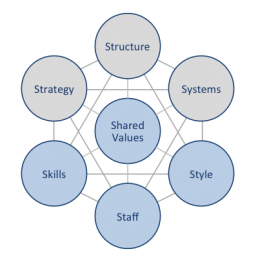Having the right people with the right skills is getting a special section in most annual reports, so there must be something to the idea of human capabilities and human capital. The importance of people and the skills they carry is definitely on the agenda of senior management and board rooms.
But not only is it important and trendy, the market value put on intellectual capital is significant. According to Stern business school, the market-to-book value ratio (PBV) is 5.0 for European application software, 4.2 for online retailers, and 6.7 for information service providers. In comparison, PBV for European banks is 0.6, and for some European banks you could buy them with their own free cash, if that were legal.
Market Value of Intellectual Capital — Not Just IP
We have learnt over time to put a market value on software and intellectual property, but it is harder to put a market value on human intellectual capital — it is elusive and easy to lose. In mergers and acquisitions, there are numerous examples when the merger did not meet the expectations of the merged employees, and as a result they left, hurting the value of the merged company seriously.
We used to put a name and measures on employee retention, employee satisfaction and net promotor scores, but perhaps it is better to put a name and measure on skill retention and skill development. It is the talents, skills, and capabilities in employees that a company is looking for, and some talents, skills and capabilities are more valuable than others.
New Technology Brings New Requirements for Skills
In the ongoing COVID-19 pandemic crisis, there is a simultaneous shift of skills in the automotive industry — older mechanical skills linked to fossil fuels are being replaced by new software development skills linked to the new electricity-based cars and trucks. And this happened to coincide with the temporary layoffs of the pandemic.
Similarly, we are seeing the beginning of a shift of skills in the IT services industry and within IT departments. The rapid change of technology, the rapid shift towards public cloud, and the rapid development of digital, cloud-native services means that some other IT-related skills are becoming obsolete.
Some IT workers, used to having their competency in high demand, suddenly find themselves less attractive, and that their lives have to take a new course — a reskilling exercise suddenly awaits them. IDC, and many with us, preaches continuous learning, but many IT workers, many IT service providers, and many IT departments have not done this enough.
A Shift of Skills in Europe – IT is Impacted No Less Than Other Industries
We are due for a shift of skills in the European IT community. It is dawning upon us that the rapid technology developments we praise may turn against us unless we keep up the pace of learning. On-the-job training may perhaps no longer be sufficient to sustain the knowledge levels we need. Skill levels may need to be quantified, and skills supply assessments in organisations may be required to determine the gap between the skills we need to meet the new business models, and the skills the organisation currently has.
Organisations have been good at recognising and evaluating their employees. It is part of the standard set of processes in any service provider to have regular evaluations, scorecards, goal setting exercises and measurements for their employees.
However, there is rarely a separation of the individual and the skills that this individual carries. So human resources are evaluated and developed, but the individual skills or the supply of skills in an organisation is rarely assessed. It can be argued that it is the talents, skills and capabilities that people carry that brings market value to an organisation, rather than the human resources themselves.
Such a view tends to be more productive when it comes to skills sourcing and skills development, as you can see the mass of skills for an entire organisation and assess and prioritise the gaps.
The McKinsey 7-S Model
McKinsey’s 7-S model, developed by Waterman and Peters in the 80s, is often used as a strategic tool in change management processes. The theory is that the seven factors — strategy, structure, skills, style, systems, staff, and shared values — need to be aligned and reinforcing one another for an organisation to be successful.
The framework was also used to explain success in the bestseller In Search of Excellence, written by the same authors and published in 1982.
7-S makes a distinction between staff and skills — staff is the human resources, demographics, and education levels of an organisation, whereas skills are the competencies and capabilities. The framework suggests that a change process should start with the shared values and the strategy, followed by the internal setup (structure) and systems.
You then define the skills and skill development you need to reach those goals together with the staff and interaction (style) required.
A Market for Measuring Intellectual Capital?
The market for assessing, measuring, sourcing, and developing skills is expected to grow, because the market valuation of companies excelling in these processes is much higher than the companies that don’t.
The models for looking at an organisation’s inventory of skills rather than its inventory of staff will thereby develop over the coming years, and 7-S is perhaps one of the starting points for that.
Likewise, it is valuable to examine and understand the organisations that manage the asset of skills in a successful way, that are able not only to build their employee value brand, but also to continuously source, match and develop the skills employees carry and determine what skills are required, prioritised and less important. Or you can let IDC to do the analysis and benefit from the research provided by us.
If you want to learn more about this topic or have any questions, please contact Martin Sundblad, or head over to https://www.idc.com/eu and drop your details in the form on the top right.


